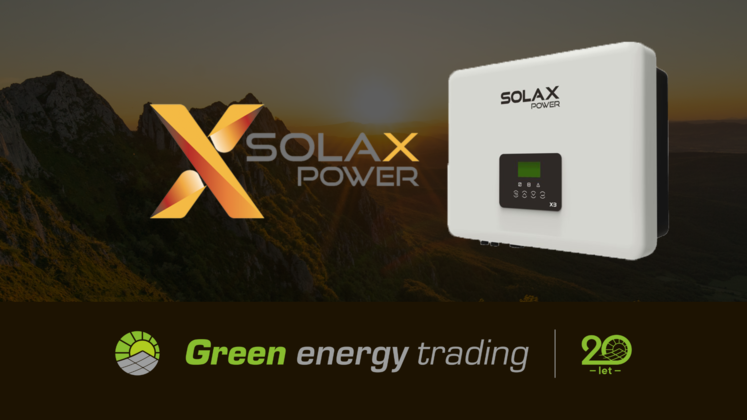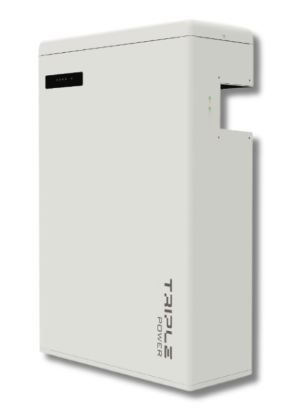SolaX brings smart solutions for your home
 9. 7. 2025
9. 7. 2025
The rise in energy prices has sparked huge interest in photovoltaic power plants and the associated possibilities of 100% utilisation of the green energy they produce. It is not always possible to consume all the energy produced directly.
The best way to use surplus solar energy is to store it in a battery storage system for later consumption.
How do battery systems work?
The main operating principle of a residential or commercial/industrial energy storage system is almost the same. The difference lies in the amount of energy that is stored and transmitted.
The system can be powered by electricity from sources such as solar panels, as well as from the grid during periods of lower energy demand (off-peak) when the price usually drops significantly.
Energy is stored in the form of direct current (DC), which is later converted to alternating current (AC) by a power conversion system (PCS) or inverter to power appliances and equipment in a home or commercial facility.
The Energy Management System (EMS) takes care of actively controlling the charge and discharge cycles to ensure the best system outcome and maximum gain for the user. C&I systems are also commonly used to interact with the utility grid to provide grid services such as frequency regulation or energy arbitrage.
Tips for long battery storage life
Maintain temperatures within recommended temperature ranges
The battery datasheet (downloadable with each product) includes a "Ambient Operating Temperature Range". It is important to pay attention to both the lower and upper limits. If the battery is heated too much, the battery life will be reduced by up to 50%.
DOD settings
The DOD, or usable depth of discharge, should be set from the default 90% to a value in the 60% - 80% range. Or increase the minimum battery condition value from 10% to 20 - 40%.
Charging to 100%
Occasional (twice a month) or regular (daily) charging to full capacity is very beneficial for batteries.
Winterizing the battery
One way to extend the life of a battery is to charge it to 100% and completely shut it down over the winter. However, this will extend the payback period of your investment.
Longer discharge and charge times
Spread the power surges over the whole day. For example, delay the start of your appliances - jumping discharges are just as damaging to batteries as jumping or fast charging.
The SolaX battery system
One of the many battery systems you'll find in our range is the SolaX system. They are suitable for home energy storage and are one of the top three residential battery systems in the world.
With more than 700,000 systems in operation in over 80 countries, SolaX systems have gained wide international recognition.
Triple Power's new high-voltage battery solution allows you to manage solar energy with minimal worry and maximum control.

SolaX T-BAT H5.8 - T58 Master V2
The Master variant has an integrated BMS unit and the Slave variant does not include a BMS unit.
One Master must always be included in the set and the cascade can possibly include more Slave batteries.
The Triple Power model incorporates the latest LFP technology to provide much safer installations with wider temperature tolerances.
With a 10-year warranty and 90% depth of discharge, the new Triple Power battery is a flexible, practical and high-performance energy storage solution.
SolaX X3-Hybrid-10.0-D
The SolaX X3-Hybrid-10.0-D three-phase inverter offers a flexible and scalable solution for residential and commercial applications with a standard 10-year warranty.
Its exceptional features, include up to 200% PV overshoot, high charge and discharge efficiency and built-in shadow monitoring.
The inverter ensures durability and compatibility, even in low-temperature environments, with IP65 protection and support for high-performance solar panels.
Pocket Wi-Fi is also part of the complete SolaX kit.

SolaX HV11550 - T58 Slave V2
This 5.8 kWh battery uses LFP technology and offers great features.
The 5.8 kWh model can be installed in series with up to 4 batteries, allowing 23 kWh of storage.
With the SolaX T-BAT H5.8 - T58 Master V2 battery, it is the ideal combination for a set with the SolaX X3-Hybrid-10.0-D inverter.
The Slave variant does not include a BMS unit.

